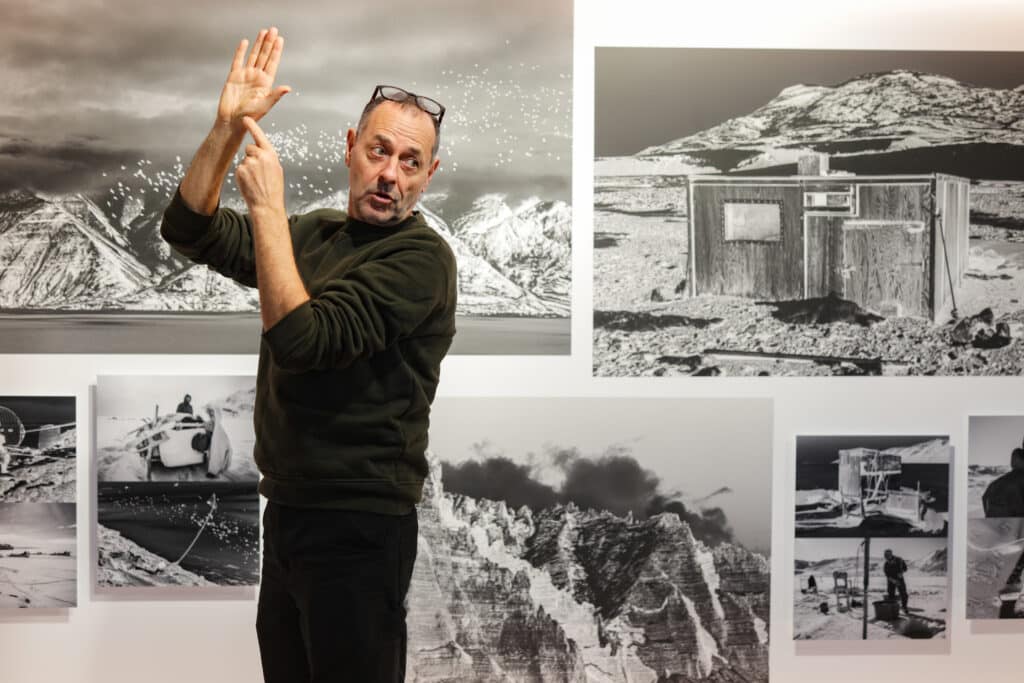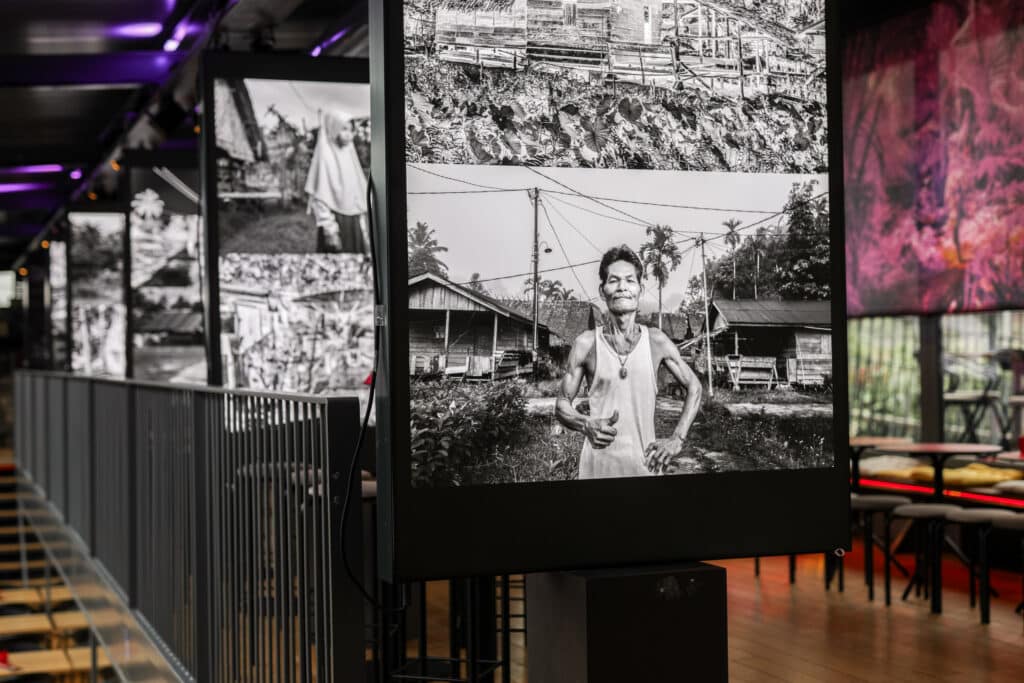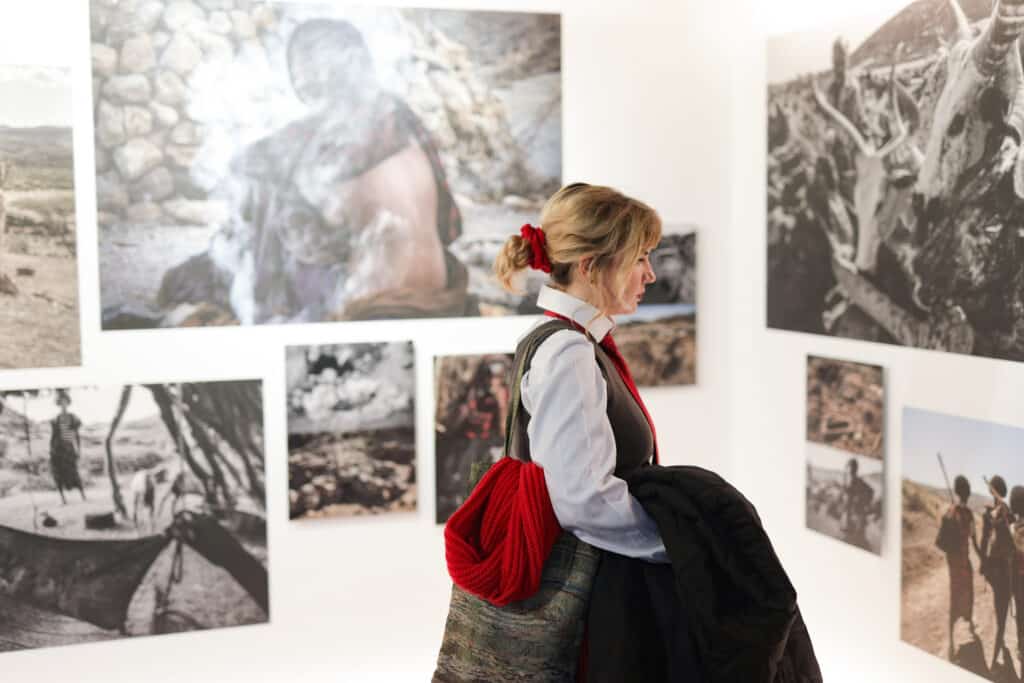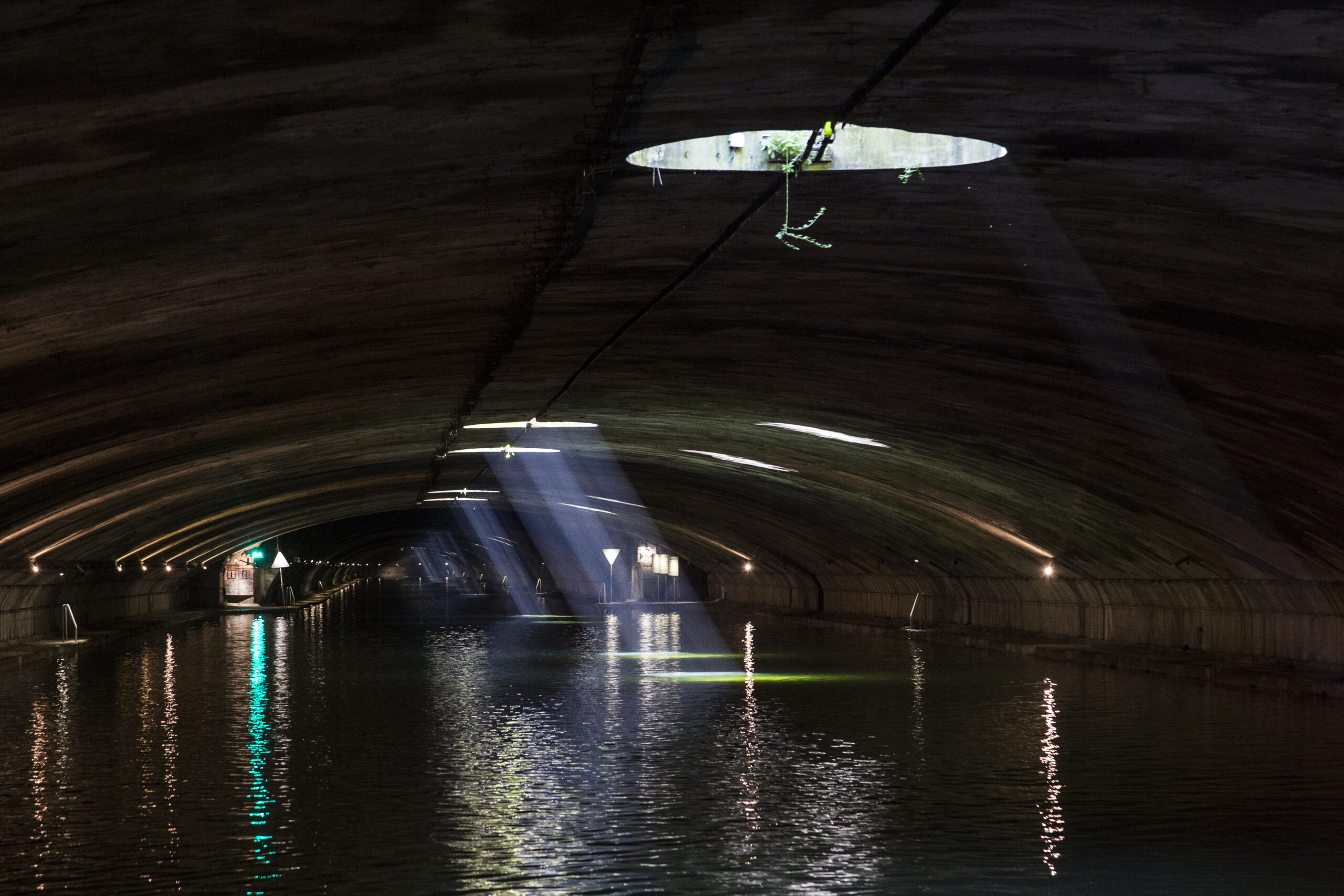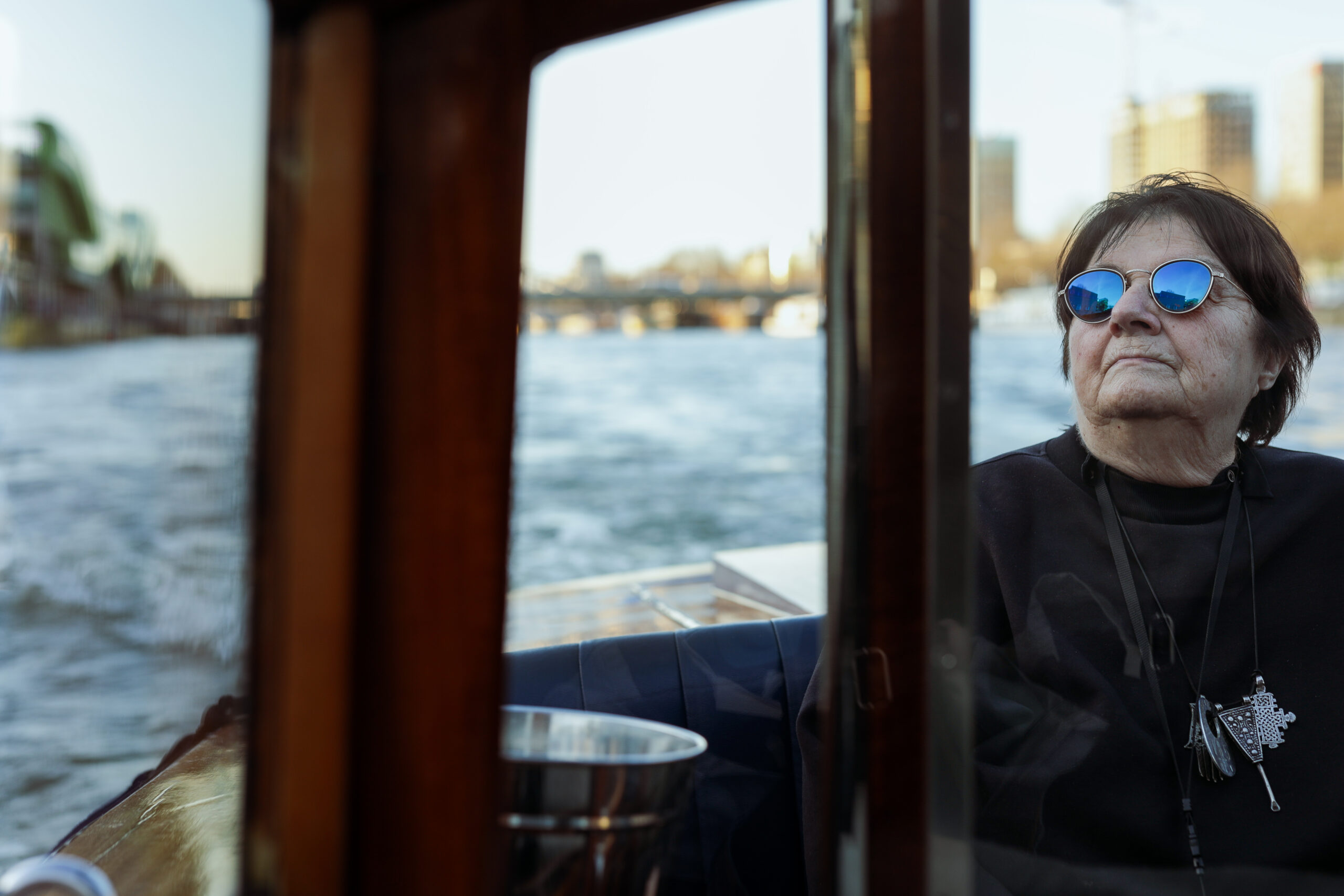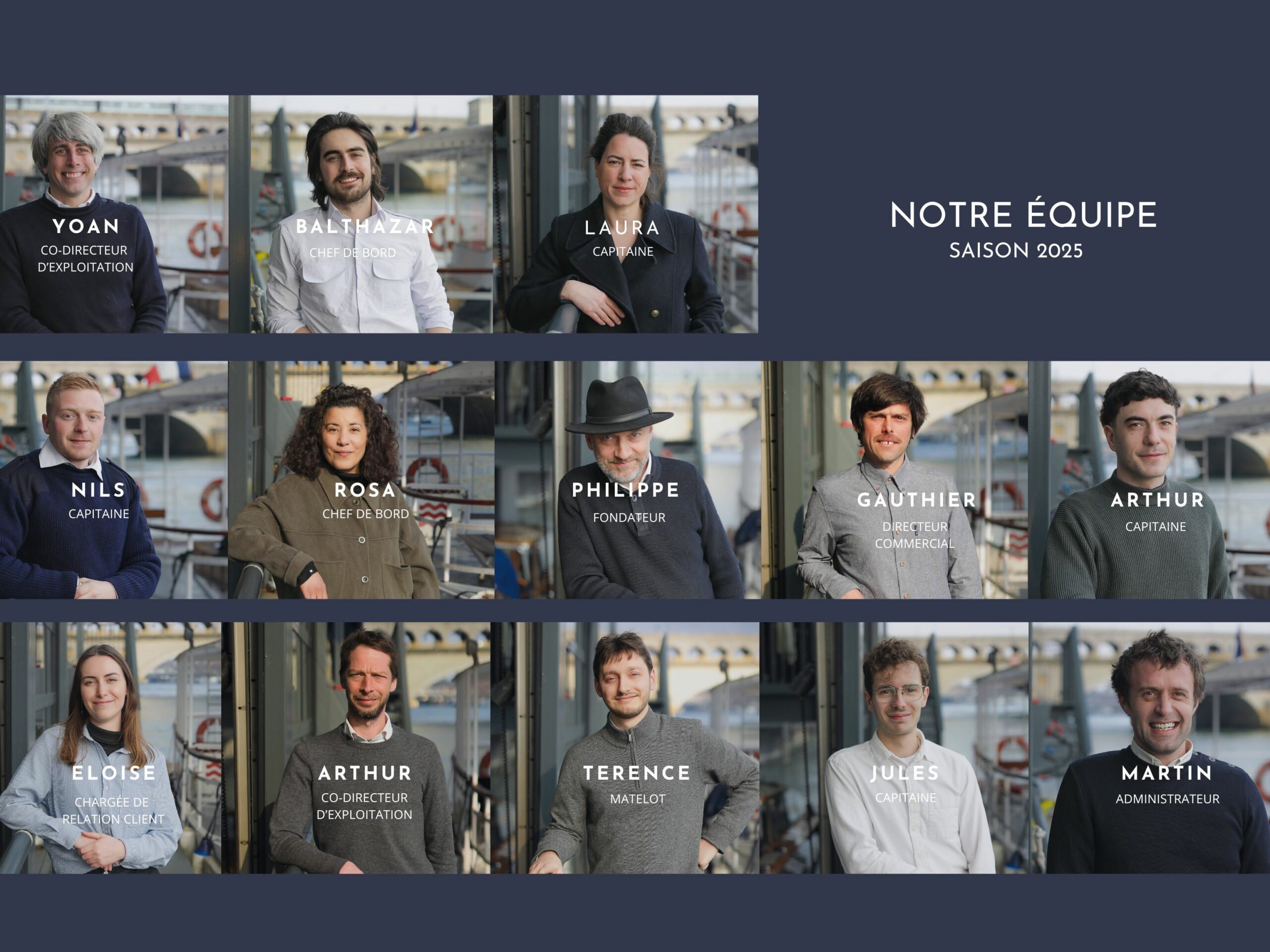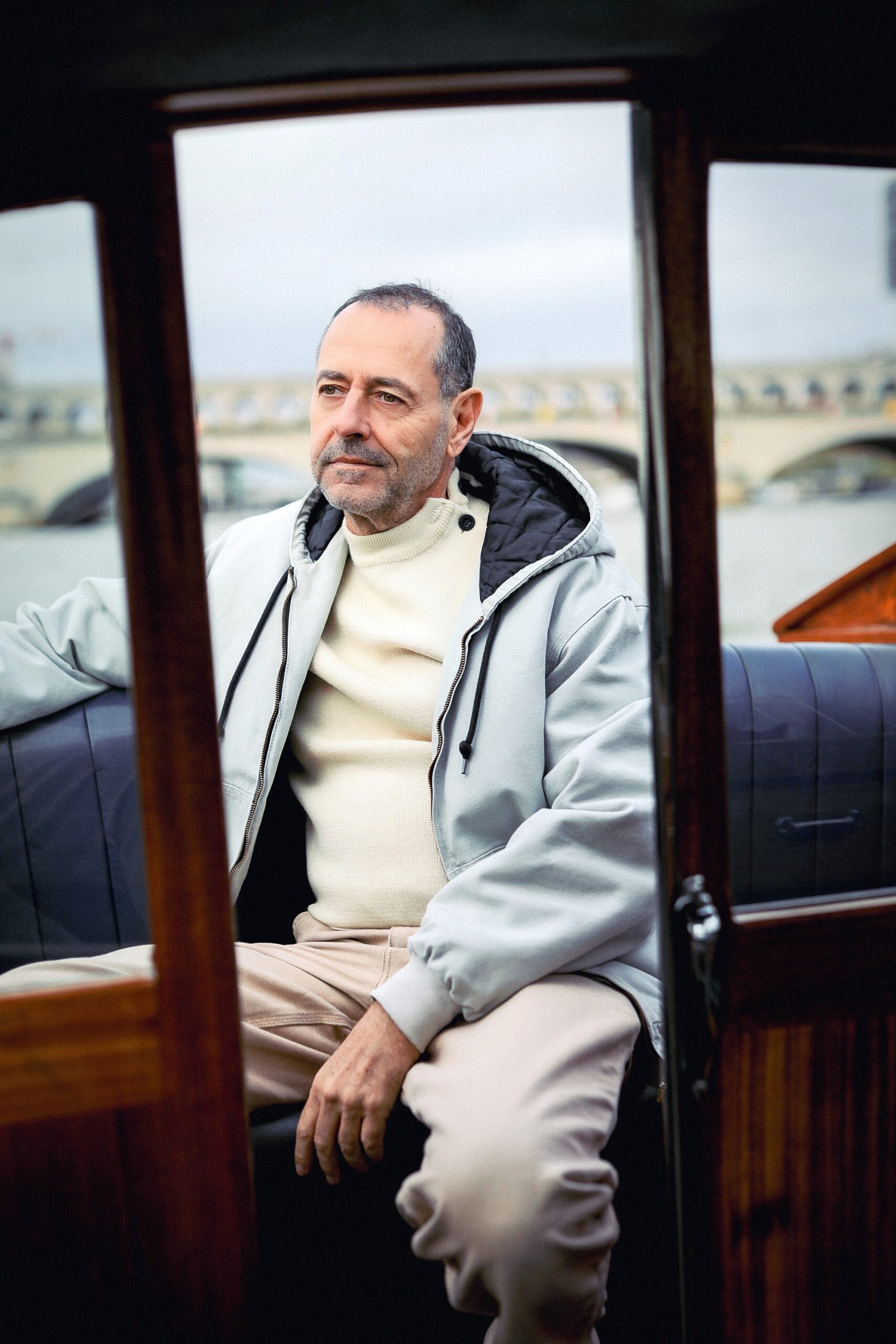Meeting with Françoise Huguier aboard Murano
To mark the exhibition devoted to Malian photography currently on view at Quai de la Photo, photographer, academician and frequent traveler Françoise Huguier, who also initiated the Biennale de Bamako, climbed aboard Murano for a symbolic voyage down the Seine. Known for her visual narratives from the far reaches of the world, she spoke of her intimate relationship with rivers, navigation, creation and memory. This journey became a privileged moment for exchange and reflection on her artistic universe and the importance of travel in her photographic approach.
Does navigation or the idea of the river bring to mind any particular memories of your travels?
The first river that brought to mind a whole life story was the Mekong, in 1950 in Cambodia, when I was a prisoner of the Việt Minh at the age of 8. To get to the camp in a virgin forest, they took us by pirogue from Kompong-Tiam to Kratié.
And in 1980, I was lucky enough to get a visa for Burma. I travelled by boat on the Irrawaddy, from Mandalay to Pagan, a major Buddhist archaeological site, with numerous monasteries, pagodas and temples. I was able to photograph the ports of call at each of the rather long stopovers.
Mali, like other places you’ve visited, is often crossed by rivers. Has this proximity to water influenced your way of seeing or photographing?
The Niger River flows through Mali… Malick Sidibé’s photos of bathers on the banks of the Niger, particularly women in bathing suits and even naked, gave me the idea of taking the boat from Koulikoro, which is the port of Bamako, and going as far as Timbuktu. Before that, I was inspired by Mopti and the whole Peul region, where the locals would come into the water to offer us fruit and vegetables. This enabled me to photograph people up close. In Timbuktu, I knew there were hippos in the Niger, so I took a pirogue to go and photograph them. Unfortunately, when hippos are in the water, you can only see two small ears. But as luck would have it, on the other side of the river, a herd of dromedaries passed by, so I took pictures repeatedly, and the last dromedary passed by just as the bozo piroguier lowered his head. That’s when I pressed the shutter release. And that photo, where everything happens on the left, became an iconic image.
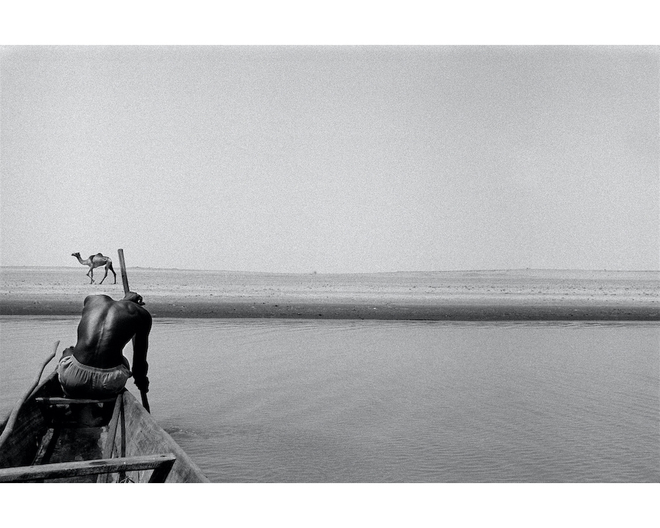
“The Bozo fisherman, Timbuktu, 1988. Cover of Françoise Huguier’s book “Sur les traces de l’Afrique fantôme” (ed. Maeght, 1990) © Françoise Huguier
How do you see the link between travel, observation and creation in your work?
Before traveling, I read a lot – L’Afrique fantôme, in the footsteps of Michel Leiris, or about polar Siberia for Kommunalka. Reading gives me ideas. And what’s important to me are the people, the light, the framing… I’ve never been influenced by other photographers, rather by film directors, such as Tarkovsky for polar Siberia.
If you had to associate a word or image with the Seine today, which would you choose?
What stands out for me when I’m at the Quai de la Photo are all the barges that go by. I thought there were fewer and fewer of them, but every time I sit down and look around, I still see lots of them. It reminds me of Jean Vigo’s film L’Atalante.
© crédit photo : Marion Briffod
__________________________________________
L’exposition « Un autre Mali dans un autre monde » est à découvrir à Quai de la Photo jusqu’au 1er juin 2025.
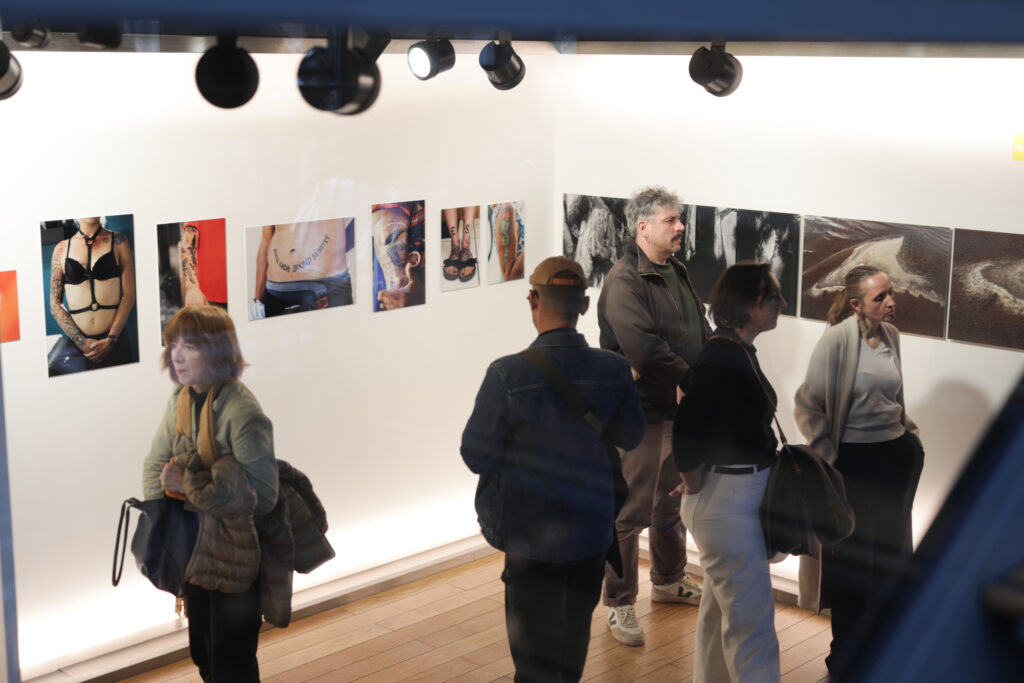
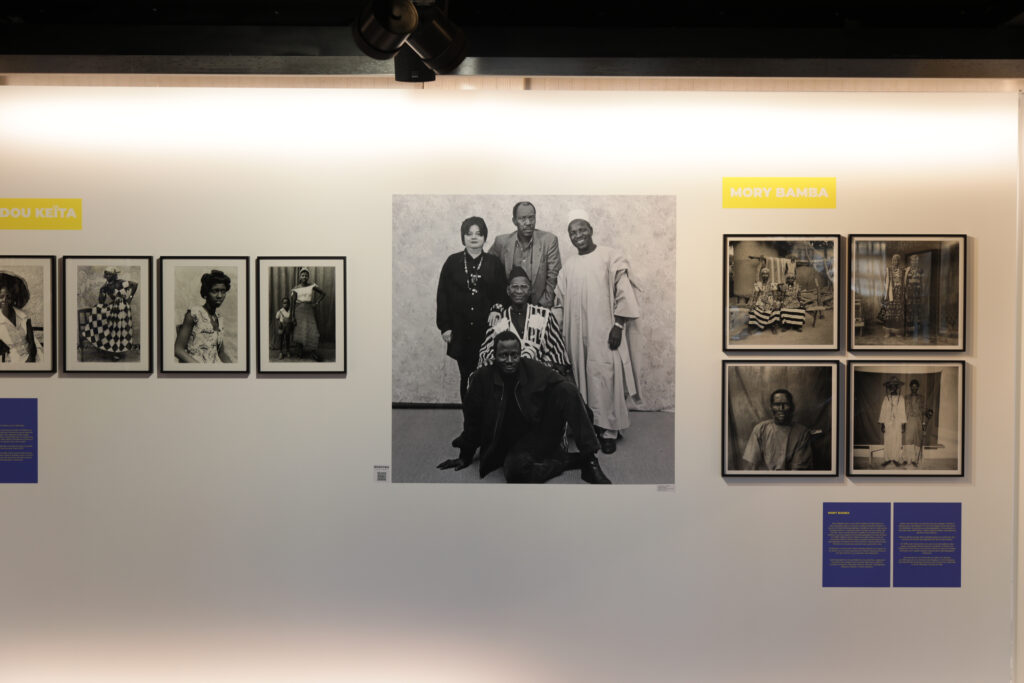
To mark the exhibition devoted to Malian photography currently on view at Quai de la Photo, photographer, academician and frequent traveler Françoise Huguier, who also initiated the Biennale de Bamako, climbed aboard Murano for a symbolic voyage down the Seine. Known for her visual narratives from the far reaches of the world, she spoke of her intimate relationship with rivers, navigation, creation and memory. This journey became a privileged moment for exchange and reflection on her artistic universe and the importance of travel in her photographic approach.
Does navigation or the idea of the river bring to mind any particular memories of your travels?
The first river that brought to mind a whole life story was the Mekong, in 1950 in Cambodia, when I was a prisoner of the Việt Minh at the age of 8. To get to the camp in a virgin forest, they took us by pirogue from Kompong-Tiam to Kratié.
And in 1980, I was lucky enough to get a visa for Burma. I travelled by boat on the Irrawaddy, from Mandalay to Pagan, a major Buddhist archaeological site, with numerous monasteries, pagodas and temples. I was able to photograph the ports of call at each of the rather long stopovers.
Mali, like other places you’ve visited, is often crossed by rivers. Has this proximity to water influenced your way of seeing or photographing?
The Niger River flows through Mali… Malick Sidibé’s photos of bathers on the banks of the Niger, particularly women in bathing suits and even naked, gave me the idea of taking the boat from Koulikoro, which is the port of Bamako, and going as far as Timbuktu. Before that, I was inspired by Mopti and the whole Peul region, where the locals would come into the water to offer us fruit and vegetables. This enabled me to photograph people up close. In Timbuktu, I knew there were hippos in the Niger, so I took a pirogue to go and photograph them. Unfortunately, when hippos are in the water, you can only see two small ears. But as luck would have it, on the other side of the river, a herd of dromedaries passed by, so I took pictures repeatedly, and the last dromedary passed by just as the bozo piroguier lowered his head. That’s when I pressed the shutter release. And that photo, where everything happens on the left, became an iconic image.

“The Bozo fisherman, Timbuktu, 1988. Cover of Françoise Huguier’s book “Sur les traces de l’Afrique fantôme” (ed. Maeght, 1990) © Françoise Huguier
How do you see the link between travel, observation and creation in your work?
Before traveling, I read a lot – L’Afrique fantôme, in the footsteps of Michel Leiris, or about polar Siberia for Kommunalka. Reading gives me ideas. And what’s important to me are the people, the light, the framing… I’ve never been influenced by other photographers, rather by film directors, such as Tarkovsky for polar Siberia.
If you had to associate a word or image with the Seine today, which would you choose?
What stands out for me when I’m at the Quai de la Photo are all the barges that go by. I thought there were fewer and fewer of them, but every time I sit down and look around, I still see lots of them. It reminds me of Jean Vigo’s film L’Atalante.
© crédit photo : Marion Briffod
__________________________________________
L’exposition « Un autre Mali dans un autre monde » est à découvrir à Quai de la Photo jusqu’au 1er juin 2025.


Every year, new adventures are written on the Seine. Aboard each of Seine Avenue’s boats, passionate men and women work hard every day to offer you special moments suspended out of time, between sky and water, heritage and poetry. Today, I invite you to discover the men and women who make the heart of our fleet beat faster.
At the helm of this 2025 season you will find a tight-knit duo formed by Yoan and Arthur, both operations managers. They join forces to ensure fluid synergy between the crews and operations.
On board, Balthazar and Rosa embody the elegance and mastery needed to welcome passengers with professionalism and kindness, accompanied by Térence and Claire, attentive deckhands, bringing their attention to the smallest detail.
Our captains Laura, Nils, Arthur (yes, a second one!) and Jules take the helm with unfailing skill, carefully ensuring that each cruise runs smoothly.
Philippe, founder of Seine Avenue, continues to instill his vision into the whole project, ensuring the continuity of a beautiful human and nautical mechanism. He is accompanied by Gauthier, our sales manager, whose energy is focused on development and partnerships
Behind the scenes is Éloïse, our customer relations manager. She is your first voice and your first smile when you contact us. And Martin, our administrator, ensures the stability of internal operations.
We wish you a great season and a wonderful time aboard our boats! 🌊
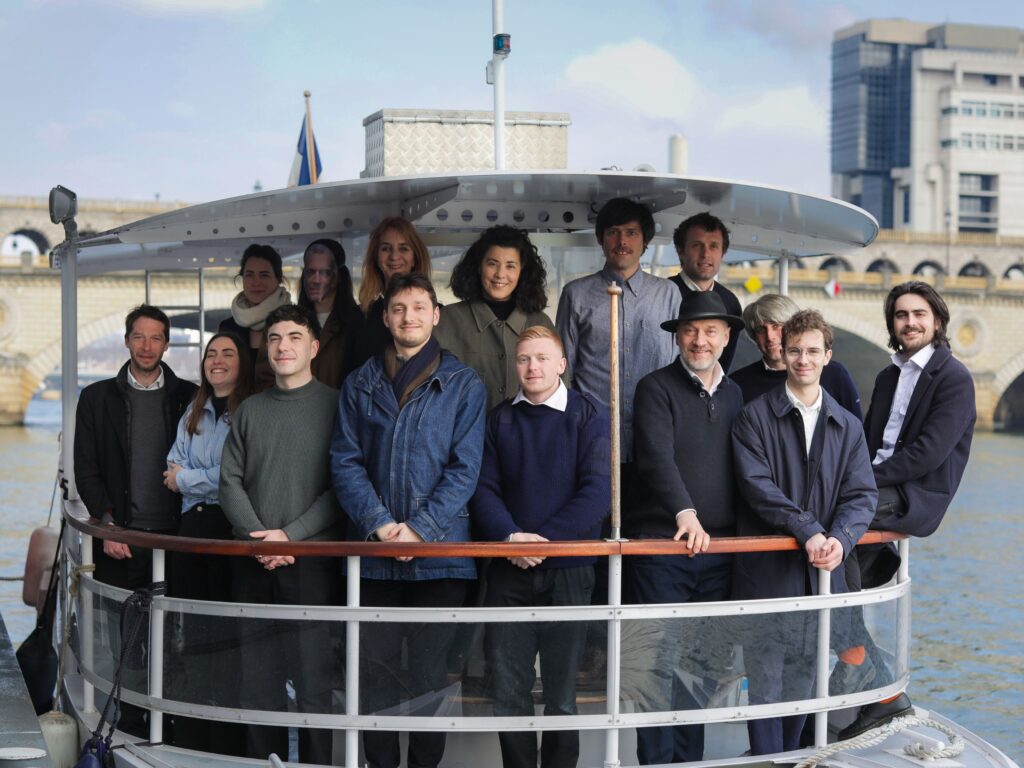
Derrière la caméra
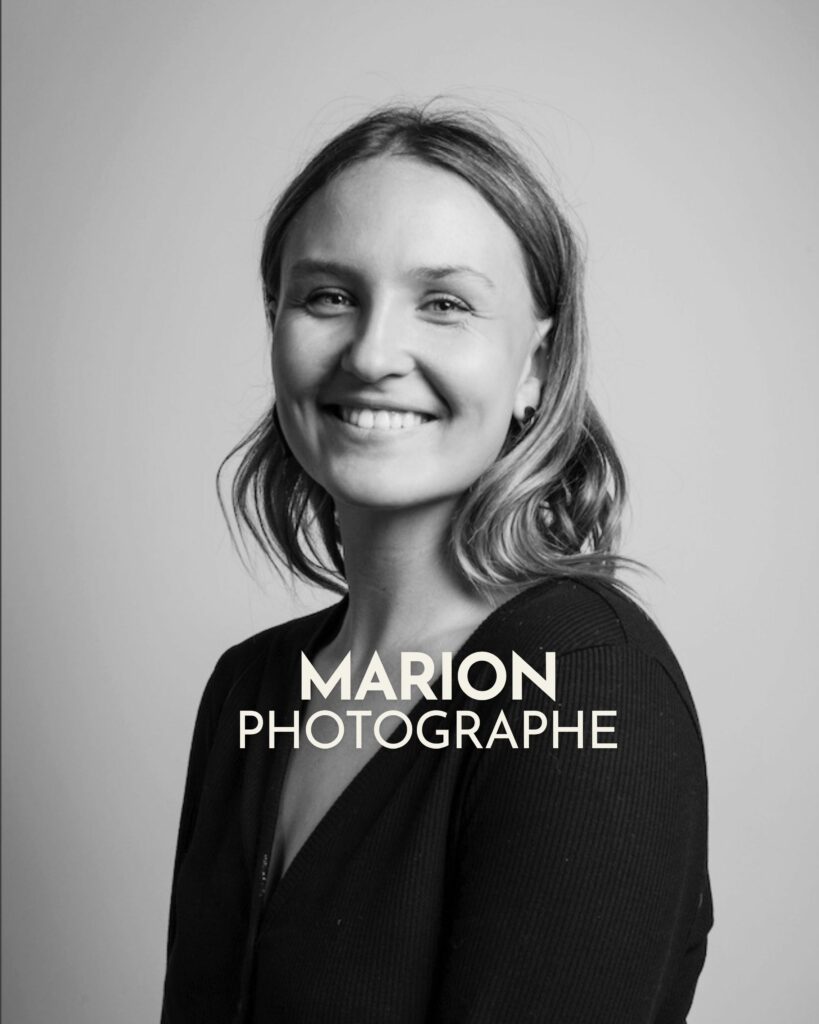
My name is Marion, and if you happen to see photos of this wonderful team (whether candid or posed!) chances are I’m the one behind the lens. My role is to capture the everyday moments of those who bring unforgettable experiences to life on the Seine.
Through my images, I strive to reflect the soul of this human and floating adventure, between reflections and truths, gestures and smiles. See you soon for the rest of the season, either on the water or through my images!
© crédit photo : Marion Briffod
We had the privilege to receive french photographer Franck Desplanques aboard Murano, whose works are currently on display at Quai de la Photo. This encounter along the Seine was the opportunity to explore his universe and to understand how the voyage feeds his look and artistic approach.
The Murano thus turned into a place for discussion and reflection while we talked about travelling and photographing. A moment out of time, as the artist shared his experiences on the way each journey feeds his inspiration, how it changes the way he looks at the world.
Franck Desplanques captures through his lens the diversity of indigenous cultures all around the globe. His work isn’t only limited to a documentary approach, it also aims at reaching beyond the usual code and practices to provide a sensible and immersive view upon the daily life of these communities. Far from the cold objectivity of a photoreport, his images are filled with a visual poetry that rightfully renders the deep ties between a population and its environment.

At the heart of his approach, the voyage is a constant encounter: with territories, faces, and ways of life. Observing is not enough, one needs to feel, listen and understand. Franck’s pictures are the result of this immersion, of the proximity that he develops with the inhabitants of the landscapes he comes across. Each image thus becomes a fragment of a journey, an invitation to discover tales and traditions that are often overlooked.
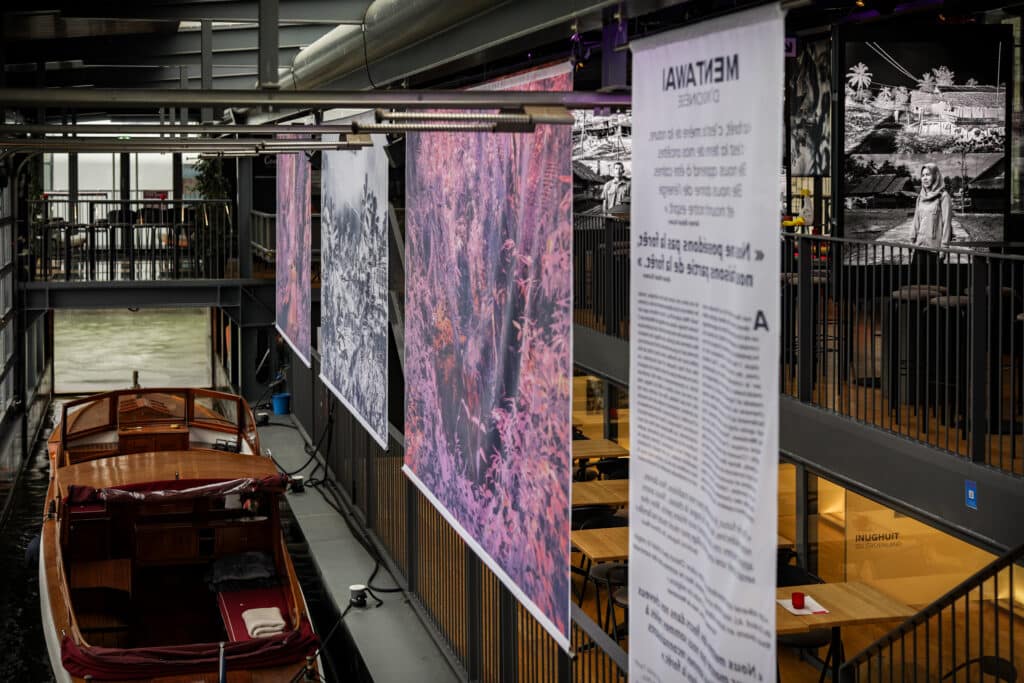
Through his exhibition, Franck Desplanques offers us the possibility to dive into the heart of each of these worlds, where each picture tells a singular story. His compositions play with light, matter and colors to translate the essence of each moment. This sensibility turns his work into a real visual odyssey, between reality and fantasy.
Franck Desplanques’ exhibit is an invitation to travel in a different manner, through the sensibility of a gaze that transcends the barriers and reveals the beauty of cultures all across the globe. des cultures du monde.
© crédit photo : Marion Briffod
__________________________________________
